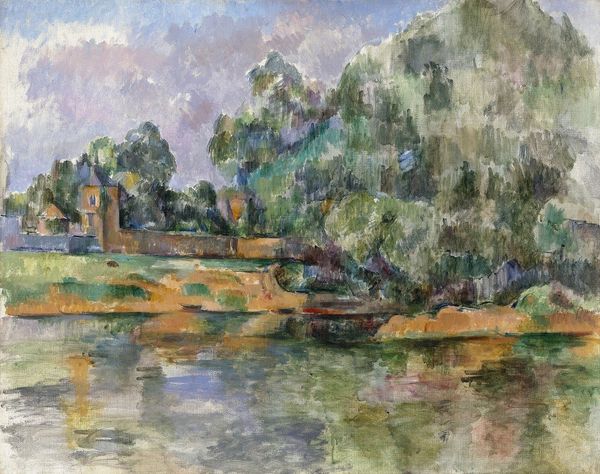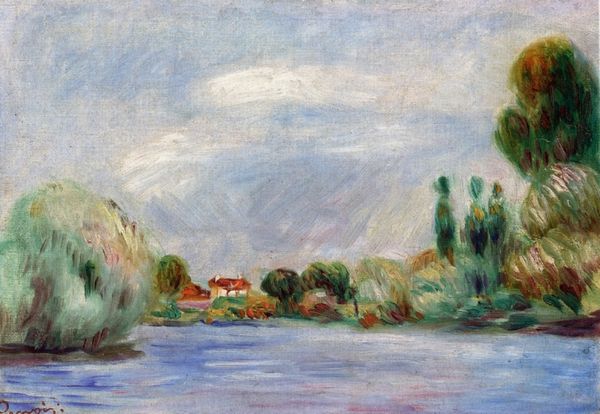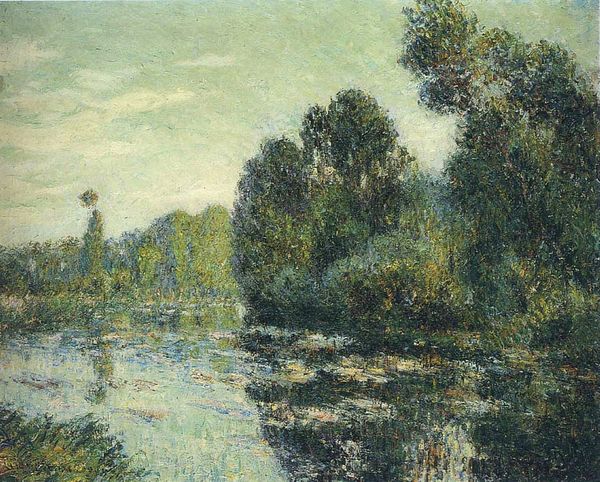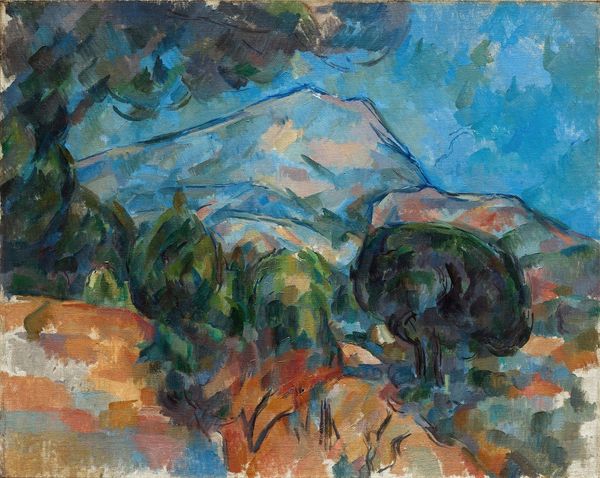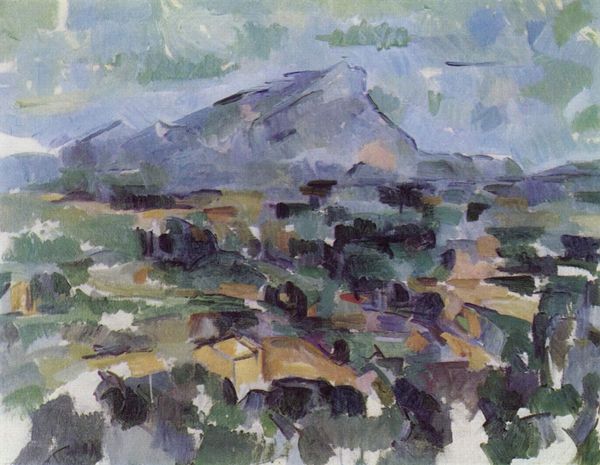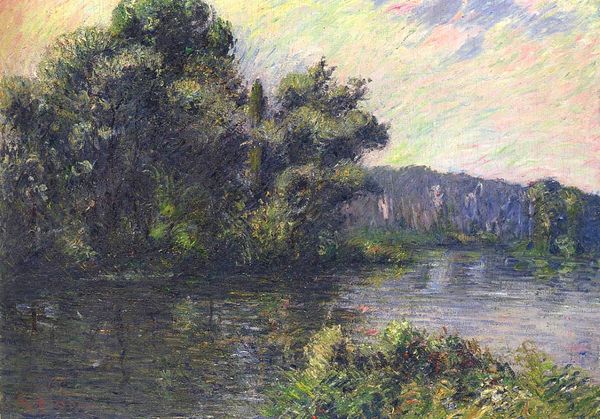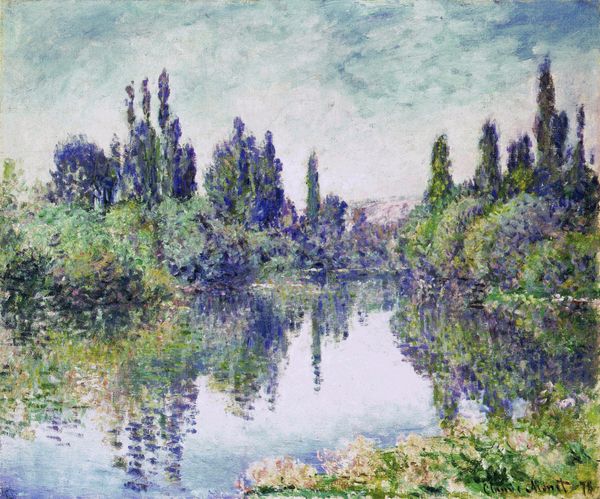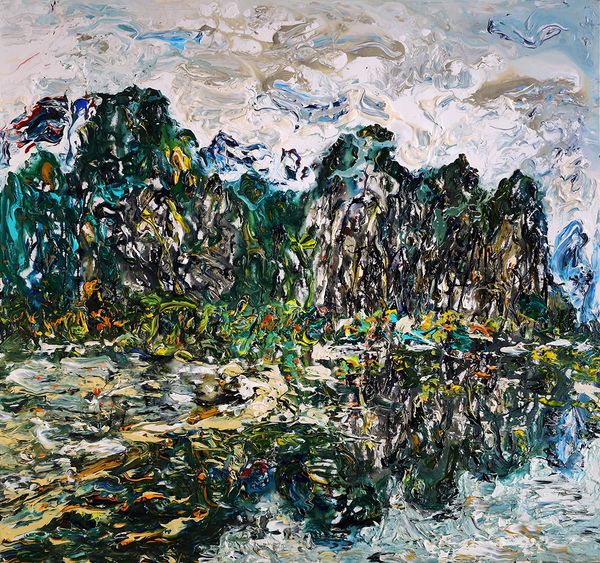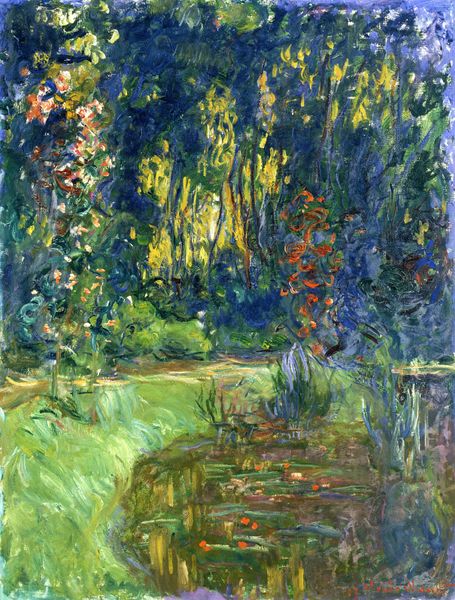
painting, oil-paint, impasto
#
tree
#
painting
#
oil-paint
#
landscape
#
impressionist landscape
#
form
#
oil painting
#
impasto
#
geometric
#
water
#
post-impressionism
Dimensions: 65 x 81 cm
Copyright: Public domain
Curator: Here we have Paul Cézanne’s "The Lac d'Annecy," painted in 1896, a later work held here at the Courtauld Gallery. Editor: It feels melancholic, doesn’t it? That big, brooding tree on the left and those jagged mountains pressing down—makes you want to write a sad poem and drink cheap wine. Curator: Note how Cézanne renders the scene using geometric forms—observe the distinct planes composing the mountains and the lake, almost like facets of a gemstone. Editor: Right! Like he’s trying to build the whole world out of little colored blocks. But, also, that impasto—that thick application of paint—makes it so tactile. I want to run my hands over it and feel that lake shimmering. Curator: Indeed, Cézanne’s innovative use of impasto and his focus on form over traditional representation mark him as a key figure in the Post-Impressionist movement, anticipating Cubism. Notice the contrast between the solidity of the architectural elements and the fluidity of the water’s reflection. Editor: It's weird, the reflections aren't perfect copies, are they? A bit wonky, as if the water's distorting reality, teasing us with another view. Almost as if memory isn’t reliable... Is that the right read? Curator: Memory, perspective, and objective reality—all concerns present within Cézanne's project to challenge traditional painting and ways of seeing. His process aimed to capture not just the optical appearance of a scene but its underlying structure and felt presence. Editor: Yeah, I feel that! There’s something profoundly real about it despite all the distortion, as if he somehow paints the essence of that place, of being there. You know, the vibe, not just what your eyes see. Curator: Absolutely. Ultimately, in focusing on the formal elements of art—structure, color, composition—Cézanne invites the viewer to engage in their own process of understanding. Editor: It’s one of those paintings that gets richer the longer you look at it. The stillness mixed with the tension really moves something in me. Curator: Indeed. It exemplifies why Cézanne remains an essential figure in the history of modern art.
Comments
No comments
Be the first to comment and join the conversation on the ultimate creative platform.
